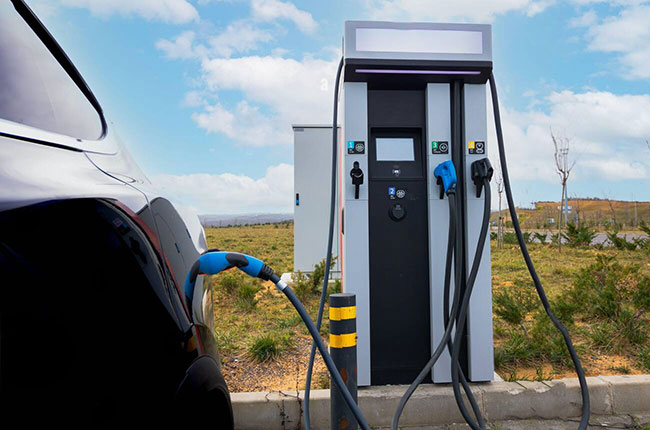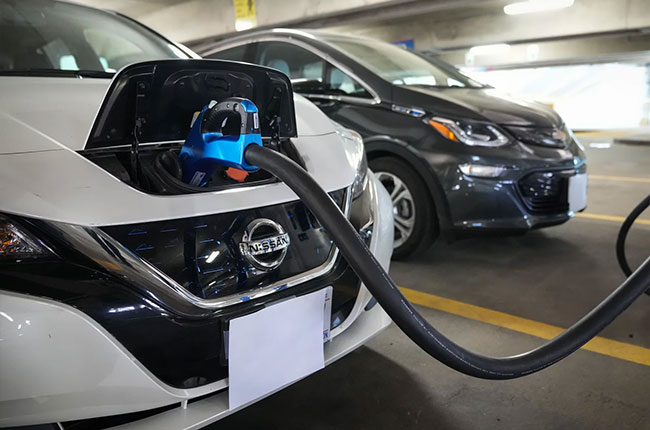
Electric Vehicles (EVs) are slowly becoming mainstream in the Philippines thanks to the ever-rising prices of gasoline and diesel. We are slowly seeing an influx of these models such as the Nissan LEAF and the Nissan Kicks as we slowly adopt the new technology. Apart from that, the rest of the world is moving quickly towards a carbon-neutral future and it looks like electric vehicles will play a huge part in making that goal a reality.
That being said, with new tech comes new terms that the public will need to understand to fully utilize the new electrified mobility that EVs offer. That’s why we created a quick guide to familiarize you with these common EV-related terms.
What do ICE, MHEV, HEV, PHEV, and BEV mean?

Chances are when you come across an article about an electric or hybrid vehicle, these terms will come out. While the first two pertain to types of electric vehicles, the latter pertains to regular gasoline or diesel-powered vehicles. With that said here are what the terms mean. We’ve arranged these terms according to how “electric” a vehicle is.
ICE - Internal combustion engine: These are engines that are typically found in the cars of today that run on either gasoline or diesel. Included in this term are engines that run on compressed natural gas or LPG as they burn or combust the gas. There is no electric motor used in these types of powertrains or vehicles.
MHEV - Mild hybrid electric vehicles or MHEVs are vehicles that primarily use the internal combustion engine for their power with a supplementary electric motor and battery pack that helps the engine achieve better performance or better fuel efficiency.
HEV - Hybrid electric vehicle: a vehicle that comes with both an electric motor and a gasoline engine as its sources of locomotion and alternates between them equally. These vehicles will typically often come with a battery pack as well to allow them electric mobility without the use of the gasoline or diesel engine. Hybrid vehicles tend to balance the use of the engine and the electric motor and either the ICE or the electric motor is connected to the wheels in most cases save for some special technologies such as Nissan’s ePower found in the Nissan Kicks.
PHEV - Plug-in hybrid electric vehicle: a vehicle hybrid vehicle that comes with the option to charge the battery either through a wall charger or through the gasoline engine. PHEVs tend to act like hybrids but with more emphasis on the electric motor over its internal combustion engine. The ICE may still be used and act as a backup or act in tandem with the electric motor while in use.
BEV - Battery Electric vehicle: a vehicle that runs on a battery pack and an electric motor only for power. These vehicles have to be plugged into a wall charger or a fast charger to top up.
What is kWh vs kW?

When you search through the spec sheet of an electric vehicle you will probably end up seeing these two terms, kW and kWh. The former pertains to kilowatts, while the latter pertains to kilowatt-hours. A kW is a measurement of power that is used to describe in EVs how much power can be put into the car when charging or how much power the electric motor can put out.
kWh on the other hand is a measurement of energy density that is used to describe how much energy is stored in the battery pack of the EV. You can think of it like how much fuel you can store in your gas tank.
What is regenerative braking?

You have probably already heard about this term especially with the plethora of hybrid vehicles slowly trickling into the local automotive market. However to describe what it means, “regen” or regenerative braking lets an electric vehicle recoup some energy that would otherwise be lost. It works by letting the electric motor generate electricity for the vehicle. It utilizes the kinetic energy of slowing down and turning it into chemical energy that is stored in the battery pack of an EV. It's a great way to also slightly extend the range of an EV on the fly.
EV charging and charging levels explained

When talking about EVs chances are you will enter a conversation about how long it will take to charge the vehicle. While this depends on the manufacturer of the electric vehicle, and the current battery technology available, it usually takes a few hours to completely charge an EV back up to full. Do note, however, that it also depends on the charger being used. EV chargers will typically use either AC or DC for charging.
AC stands for “alternating current” and is the slower method of charging an electric vehicle. AC charging is done at about 7kW to 19kW depending on the charger. These are typically found in homes or in parking garages that support EV charging. While they are slow, they are designed to only refill the range on an electric vehicle and not to charge it back up to full. Just note that they can charge an electric vehicle to full capacity but it will take several hours to do so. You can also even charge your EV via a wall socket, but it will only produce around 1 to 2kW which will make the process of charging slow.
DC stands for “direct current” which is used for fast charging stations. They typically charge EVs at a rate of 50 kW, 150 kW, 250 kW, or even higher. While these are a great way to quickly get a charge back into your EV, just remember that not all of them can utilize the higher range. An example of this is the Nissan LEAF which can only draw about 48kW to charge its battery pack. Newer models, on the other hand, can take advantage of a higher draw charging their battery packs much faster.
Now for EV charging, these are divided into three categories. Level one and level two both utilize AC charging with only their rates differing. Level three, on the other hand, uses DC to charge which leads to lower charging times.
Level 1
It's the slowest charging option that provides charging through a common 120-volt residential outlet. This level of charging adds about 5 to 6 kilometers of driving range per hour depending on the vehicle.
Level 2
This level charges a bit faster than level one as it utilizes charging via 240V or 208 V electric service. You can find these in residential areas or in commercial complexes that offer EV charging. This form of charging adds about 24 to 48 kilometers per hour depending on the vehicle.
Level 3
As explained above, it's the fastest kind of charging available to EVs as they use higher kilowatt rates. While the amount of time and energy they can put back varies, some of these chargers can quickly charge an EV to 80 percent in about 15 minutes, depending on the vehicle.
EVIDA

Passed into law in 2022, the Electric Vehicle Industry Development Act or EVIDA Law is legislation aimed at getting the Philippines ready to adopt and develop EVs. The law hopes to develop the EV sector of the country to get the masses to adopt EVs and hybrids, in effect, hopefully, producing more jobs and lessening the carbon footprint of ICE cars.
Owners of EVs and hybrids should be aware of this law because the EVIDA Law provides numerous benefits and incentives to automakers and owners of hybrid vehicles and EVs. These benefits include an exemption to the number coding scheme, discounts to the motor vehicles user charge or MVUC, and most importantly, tax incentives.
Current and future owners of EVs or hybrids should familiarize themselves with the EVIDA Law so that they know what benefits are available to them. It also helps to know what cars can and cannot benefit from these incentives before heading to the dealership to make a purchase.
Range Anxiety

As it does take a while for an electric vehicle to charge owners or users may experience a term called range anxiety. This means that you become anxious about the remaining range of your vehicle. Electric vehicles do have a limit as to how far they can travel before the battery system just goes flat and the vehicle is left stranded.
Driving an electric vehicle versus driving a standard gasoline or diesel car is a very difficult experience. With the limitations of battery technology today, you have to make sure that you use your power wisely in an EV, whereas in an ICE car, you can just head to the nearest gas station and fill up. This is where ICE cars have an advantage there is less downtime for the vehicle to refuel and get back on the road again. In the case of an electric vehicle, you may have to wait several hours to even get a small amount of range back.
With electric vehicles slowly becoming more popular in the Philippines, users and buyers alike will have to get used to these terms and what they mean. It's a new technology after all that does come with a learning curve. As technology moves forward these kinds of vehicles may soon dominate the roads.
Latest Features
-
The difference between wax and polish / Tips & Advice
Confused about whether your car needs a wax or polish? This article will guide you on what they are and what to choose for your car.
-
The 6 things every Ford Ranger must pass before it leaves the factory / Featured Article
Every Ford Ranger, from the base model to the Ranger Raptor, goes through a full inspection process before it leaves the factory. This includes six steps that make sure it’s ready to drive a...
-
Which GAC AION EV is best for your everyday lifestyle? / Featured Article
The GAC AION lineup has something for everyone, maybe you're after space, speed, or just a smooth city drive. Here's a quick breakdown of which model might work best for your day-to-day life...
Popular Articles
-
Cheapest cars under P700,000 in the Philippines
Jerome Tresvalles · Sep 02, 2024
-
First car or next car, the Ford EcoSport is a tough package to beat
Jun 18, 2021
-
Car Maintenance checklist and guide – here’s everything you need to know
Earl Lee · Jan 12, 2021
-
Most fuel efficient family cars in the Philippines
Bryan Aaron Rivera · Nov 27, 2020
-
2021 Geely Okavango — Everything you need to know
Joey Deriquito · Nov 19, 2020
-
Family cars in the Philippines with the biggest trunks
Sep 20, 2023
-
Head to head: Toyota Rush vs. Suzuki XL7
Joey Deriquito · Oct 28, 2020
-
Why oil changes are important for your car
Earl Lee · Nov 10, 2020
-
2021 Kia Stonic — What you need to know about it
Joey Deriquito · Oct 16, 2020
-
Top 7 tips for buying a used car in the Philippines
Joey Deriquito · Nov 26, 2020



